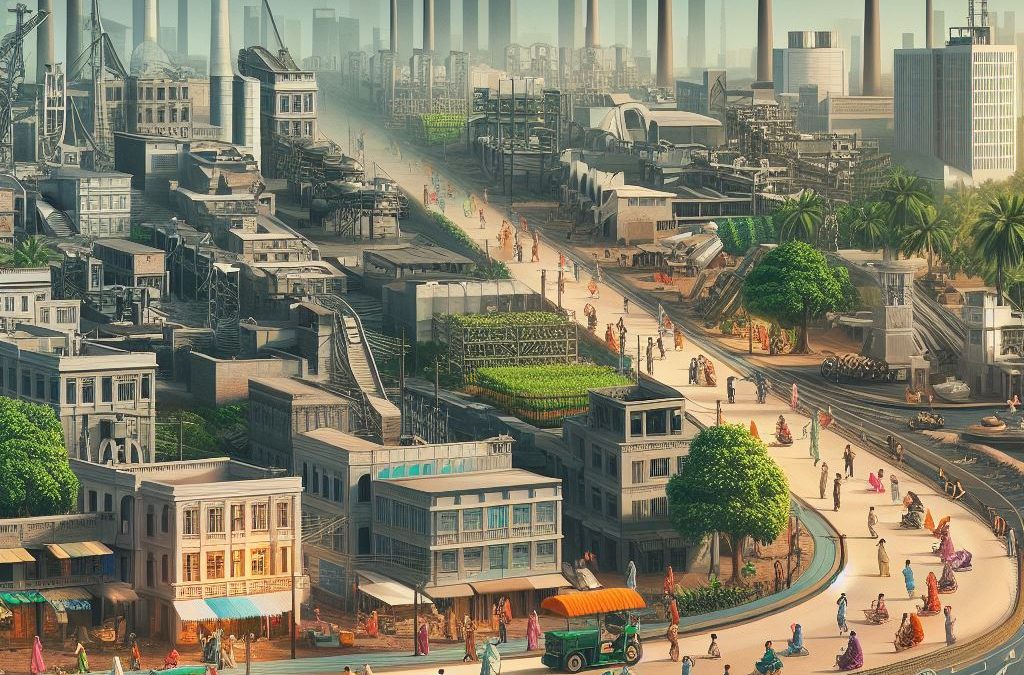Over the past four decades, Bangladesh, the world’s second-largest garment manufacturing hub, has established itself as a trusted source for global fashion brands. The “Made in Bangladesh” tag, which began its journey with the humble export of 10,000 pieces of shirts to a French buyer in 1978, has now become a symbol of trust in the global fashion market. The country’s apparel sector contributes more than $42 billion in annual exports to over 150 countries for more than 1000 retailers.
The Rise of Bangladesh in the High-End Fashion Industry
Traditionally known for producing basic garments, Bangladesh is now attracting the attention of high-end fashion brands. This shift has been catalyzed by the global pandemic and ongoing geopolitical conflicts. American brands, seeking to avoid domestic market conflicts due to the US-China face-off, have found a reliable and uninterrupted source in Bangladesh. The country has been manufacturing for renowned brands like Ralph Lauren, Tommy Hilfiger, Gap, Calvin Klein, Timberland, Puma, Giorgio Armani, and Hugo Boss.
Allegations of Exploitation and Impact on Suppliers
However, a study by British researchers alleges that some of the world’s largest clothing retailers are offsetting rising raw material costs by squeezing their suppliers in Bangladesh. The study reveals that approximately 70% of the brands sourcing from these factories were paying suppliers the same rates as before the pandemic. This has led to an unfair trade situation, considering the sharp increase in raw material and energy prices. When suppliers are underpaid, workers are the ones who are impacted, leading to potential exploitation.
Canadian Retailers and Allegations
The allegations have also raised questions about the outsourcing practices of Canadian companies. The United Steelworkers union (USW) filed a complaint with the Canadian government over allegations that Canadian Tire Corp. Ltd. was refusing to pay a living wage to workers in Bangladeshi factories that produce clothes for the retailer’s proprietary labels. Canadian Tire denied the allegations, insisting that it follows local law and regularly tracks what its suppliers pay their workers.
Diversification, Sustainability, and Technological Advancements
To maintain its position in the global industry and fend off competition from Vietnam, Bangladesh is diversifying its exports to include high-end luxury products, lingerie, activewear, and swimwear. The country is also emphasizing its sustainability credentials, including worker health and safety. Bangladesh’s ready-made garment (RMG) sector is now a frontrunner in transparency in terms of factory safety and value-chain responsibility.
Bangladesh’s apparel sector is undergoing a transformation from labor-intensive manufacturing into an innovative, high value-added manufacturing industry. Modern technologies like laser-cutters, sewbots, 3D printers, and robotic arms are being used in factories. The country is also home to the most Leadership in Energy and Environmental Design (LEED) green factories in the world, with 177 apparel factories certified as LEED by the US Green Building Council.
Challenges and Government Initiatives
Despite the progress, the COVID-19 pandemic has had a long-term impact on all industrial sectors in Bangladesh, disrupting the supply chain. The country also faces challenges due to poor quality infrastructure, affecting industry performance. However, the government is tackling these issues by investing in major projects such as the Padma Bridge and the Dhaka Metro rail project. The government also plans to establish 100 economic zones across the country to attract investment into all textile, apparel, and shoe manufacturing.
Future Prospects
Bangladesh’s apparel sector is increasing its spending on research and development. The BGMEA is setting up its own innovation center at its head office in Dhaka to boost knowledge and innovation in the industry. The country also has excellent research and development institutions that aim to train technically competent expert workers for the apparel, textile, and allied sectors. Despite the challenges, Bangladesh’s apparel sector is preparing for increased competition by strengthening backward linkages, research, and logistical efficiency.
Conclusion
The journey of Bangladesh’s apparel industry has not been smooth. It has faced numerous challenges, including global financial crises, deadly factory accidents, and the recent COVID-19 pandemic. However, the industry has shown remarkable resilience, adapting to changing circumstances and emerging stronger each time. The sector is now setting ambitious targets, aiming to reach annual exports worth $100 billion by 2030. As Bangladesh is poised to graduate from a least developed country to a middle-income one in 2026, the apparel industry will continue to play a crucial role. The sector is focusing on modernization, innovation, diversification, and technological upgrades. It is also prioritizing the health, education, and well-being of its workers. Despite the challenges, the industry remains optimistic about the future, with industry leaders and trade analysts believing that the $100 billion export target by 2030 is achievable.
You might also be interested in:
The Evolution and Growth of Bangladesh’s Apparel Industry

